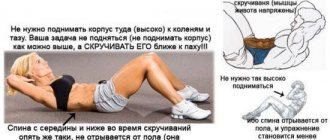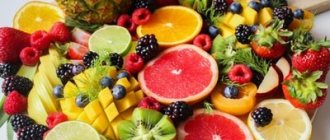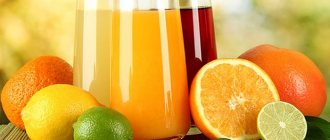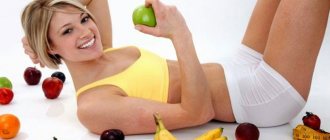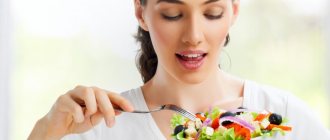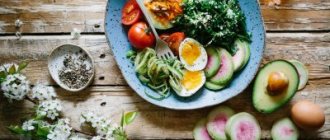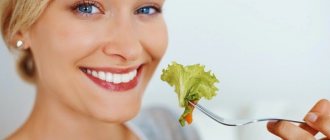Just looking at the chiseled forms of figure skaters, thoughts arise in your head about endless diets, restrictions, training and overcoming yourself. Extra pounds immediately affect their technique, so these girls must have incredible willpower to cope with the load. We tell you what athletes eat to maintain ideal figures, and how this affects their health.
Durov gave up food and alcohol: did he go crazy or did his brains fall into place?
He decided to become even more productive and create something more popular than VKontakte and Telegram.

How they make mistakes on the Internet: destroying myths about diets
They won’t teach you this in the fitness accounts.
Evgenia Medvedeva
Recently, on her Instagram, Evgenia Medvedeva posted a story in which she eats flowers with sushi chopsticks. "Diet. Four weeks,” the girl signed. Does the two-time world champion really eat only vegetation? Of course, not only flowers, but after Evgenia moved to Canada, she became interested in veganism and began working with a nutritionist.
Her daily diet includes three meals, and dinner must be light and no later than six in the evening. The champion’s diet before performances excludes fatty, fried and spicy foods, so before the Olympics in Pyeongchang, Evgenia made do with unleavened rice.
However, there are not very many strict prohibitions in a figure skater’s diet. She herself admits that she cannot live without sweets, so before training she allows herself a couple of pieces of chocolate or marmalade. Medvedeva is also a fan of Asia, so she doesn’t deny herself to tom yum soup, sushi or Japanese chips.

Why are ballerinas so skinny and what do they actually eat?
Nutrition principles, secrets and life hacks from famous dancers.
Proper diet for skaters
Trainers working with figure skaters believe that the appearance of extra pounds can only be caused by improper distribution of nutrients. Figure skating requires athletes not only to have physical endurance and well-developed muscles, but also excellent flexibility. Endurance is unthinkable without carbohydrates - skaters get them by eating fruits, vegetables, cereals and pasta made from durum wheat. Muscle strength directly depends on the intake of proteins from food - their optimal sources are lean varieties of fish, meat and poultry, as well as low-fat fermented milk and dairy products. Body flexibility can be maintained with a liquid diet. Since skaters put themselves at risk of falls at every training session, which can cause fractures and sprains, they have to enrich their diet with foods containing calcium. By the way, this element not only strengthens bone tissue, but also stimulates the conduction of nerve impulses. The main sources of calcium are dairy products and nuts.
Diet is of great importance - skaters eat in small portions, but quite often. Coaches insist that their players eat at least a couple of hours before training so that the digestion process does not interfere with full exercise. These are just general recommendations. In fact, each athlete’s diet is compiled strictly individually, all factors are taken into account: gender, age, direction of the training process, etc.
Alina Zagitova
Figure skater Alina Zagitova, on the contrary, has many strict dietary restrictions. She posted photos of her breakfasts on social networks several times - often oatmeal with dried fruits.
While visiting “Evening Urgant,” Alina said: “During the Olympic season, I weighed myself three times a day. I tried to keep the weight off. 100 grams is already critical. There was a time when I was so worried that I even limited my water intake. Before weighing, I took a sip and spat it out.”
However, she soon realized that it was important to maintain her health and not allow fanaticism even in this topic. Now Zagitova eats often, but in small quantities.
When you gain weight, your jumping technique immediately changes. The fat on your arm has grown and you can no longer jump.
As a reward for winning the Olympics in Pyeongchang, Alina received another important prize for her - ice cream. One.
Hypocaloric nutrition
This menu is completely opposite to what we described above. The essence of the diet is to reduce calories to lose weight.
So, women consume no more than 1200 kcal per day. It is worth limiting the amount of sugar and focusing on taking vitamins. A balanced menu must be developed in fractional form. The diet of figure skaters should not exceed 3 weeks of weight loss. Don’t forget about physical activity, because athletes spend energy on it every day.
Example of a weekly menu
You can lose up to 3 kg on this diet. Remember that portions should not be large - about 200 g.
Natalia Zabiyako
Natalia Zabiyako’s Instagram can practically be called culinary. The fitness lady often shares recipes for delicious breakfasts, pastries and desserts. There was a place for both healthy dishes and “forbidden” foods.
In one of her interviews, the athlete said: “I really like to cook, but at the same time I’m a fan of healthy eating, so I’m looking for healthy and tasty recipes. Many people are mistaken in thinking that healthy food tastes bad. If you choose the right recipe and prepare it correctly, the dish will not only benefit the body, but also great pleasure. There are no complex restrictions, I just eat foods or dishes, for example, fast food, that I haven’t consumed for a long time and don’t have the slightest desire. When you start eating right, over time your body adapts to this lifestyle and you don’t even have the desire to eat something harmful.”
Extreme weight loss
This method is used by those who need to lose a couple of kilograms in a short time. The technique lasts 7 days and has a monotonous menu.
| Breakfast | Make a mixture of fruits, such as apple and banana. For taste and benefit, you can add a pinch of cinnamon. |
| Dinner | Eat boiled rice with a piece of steamed lean meat. Or drink empty chicken broth. |
| Dinner | Keep your evening meal light and eat 1 orange. |
Also drink plenty of fluids, up to 2 liters. per day. Don't allow yourself to snack. During the diet you will lose up to 3 kg.
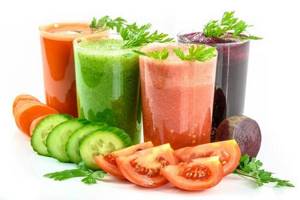
Victoria Sinitsina
Victoria Sinitsina had a terrible fear of scales. Before the weigh-ins, she took off her hairpins and chains and ran to the toilet so that no extra grams would appear on the screen.
When the ice training ended and evening came, I put on pants, three sweaters, and once a week I also wrapped myself in film and ran continuously for an hour. I gave myself a hard drying session.
The girl drove herself into a dead end - she weighed herself several times a day and controlled every piece she ate, but soon realized that this was not normal for a healthy person. Now she follows the rule “if you want it, eat it,” but consumes food in small quantities.
Three tips from Tatyana Navka
- Eat right . Vegetables, salads, fish and yogurt are a must on the menu. But don’t exclude gastronomic pleasures from your diet; If you're overdoing it, work out more in the gym.
- Stop smoking. There is nothing worse - neither for health nor for beauty. At the same time, follow your daily routine and provide your body with proper rest. Tatyana follows this rule strictly.
- Don't skip workouts. The more active your lifestyle, the better it reflects on your appearance and health.
Day 3, menu
| Name of dish | Weight of the finished dish, g | Chemical composition | |||
| Proteins, g | Fats, g | Carbohydrates, g | Calorie content, kcal | ||
| BREAKFAST | |||||
| Cocoa with milk | 200 | ||||
| Buckwheat milk porridge | 240/5 | ||||
| A cheese sandwich | 40/30 | ||||
| Boiled egg | 1 PC. | ||||
| Bun with jam | 40/40 | ||||
| "Fruits (pears) | 200 | ||||
| TOTAL | 31 | 25 | 131 | 871 | |
| DINNER | |||||
| Vinaigrette with fish (canned) | 140/50 | ||||
| Fresh cabbage with herbs | 100 | ||||
| Pickle soup for chickens. broth | 250 | ||||
| Navy pasta | 260 | ||||
| Bread | 50 | ||||
| Compote from St. apples | 200 | ||||
| Fruit (kiwi) | 100 | ||||
| TOTAL | 45 | 50 | 132 | 1195 | |
| AFTERNOON SNACK | |||||
| Juice | 200 | ||||
| Yogurt | 100 | ||||
| Almonds in yogurt | 50 | ||||
| Baking with chocolate | 30/15 | ||||
| TOTAL | 15 | 21 | 65 | 530 | |
| DINNER | |||||
| Tea with sugar and lemon | 200 | ||||
| Rice balls | 260 | ||||
| Korean carrots | 100 | ||||
| Olivier salad | 100 | ||||
| Fruits (apples) | 100 | ||||
| Kefir | 200 | ||||
| TOTAL | 27 | 39 | 110 | 880 | |
| TOTAL | 118 | 135 | 438 | 3476 | |
Food set No. 3 (calorie content - 3500 kcal)
| No. | Products | Product quantity (net, g) |
| 1. | Meat (veal, 1st grade beef tenderloin, pork, lamb) | 250 |
| 2. | By-products (beef): tongue, liver, kidneys | |
| 3. | Meat products (cooked, semi-smoked, hard-smoked, pork-smoked sausages) | 20 |
| 4. | Fish and fish products (fresh fish, frozen fish, canned fish) | 50 |
| 5. | Poultry (chickens, turkey, chicks) | 50 |
| 6. | Egg (dietary) | 1 PC. |
| 7. | Butter, including ghee | 10 |
| 8. | Vegetable oil (sunflower, olive, corn, etc.) | 40 |
| 9. | Milk (whole) | 100 |
| 10. | Dairy products: | |
| kefir | 200 | |
| yogurt | 100 | |
| cottage cheese n/w | — | |
| condensed milk | — | |
| cheese | 30 | |
| 11. | Potato | 80 |
| 12. | Cereals: | |
| pasta | 55 | |
| rice | 30 | |
| buckwheat | 50 | |
| pearl barley | 30 | |
| 13. | Fresh vegetables, legumes, herbs (assorted): | |
| carrot | 135 | |
| onion/leek | 25/30 | |
| parsley dill | 20/15 | |
| pickles | 40 | |
| peas (canned) | 40 | |
| used cabbage | 70 | |
| beet | 30 | |
| 14. | Fresh fruits (berries, citrus fruits assorted): | |
| pears | 100 | |
| kiwi | 100 | |
| apples | 150 | |
| 15. | Canned fruits | — |
| 16. | Dried fruits (dried apricots, raisins, prunes) | — |
| 17. | Fruit juices/mineral water | 200/500 |
| 18. | Nuts (walnuts, almonds, cashews, hazelnuts) | 40 |
| 19. | Sugar, candies, marmalade, halva: sugar | 50 |
| 20. | Honey | — |
| 21. | Jam, jam, marmalade | 40 |
| 22. | Flour confectionery products (cookies, biscuits, gingerbreads, etc.): baked goods | 40 |
| 23. | Rye/wheat bread | 50/55 |
| 24. | Tea | 2,5 |
| cocoa | 10 | |
| 25. | Mayonnaise | 20 |
Characteristics of the actual nutrition of figure skaters [edit | edit code ]
In the 2007/2008 season. We carried out research work to analyze the actual nutrition of young athletes on the basis of the St. Petersburg Youth Sports School of the Olympic Reserve in Figure Skating. Data on actual nutrition were collected based on the nutrition diaries completed by the athletes. To calculate the parameters of the chemical composition, we used the computer program “Organization of catering in youth sports schools and educational institutions”, developed at St. Petersburg Research Institute of Physical Culture based on tables on the chemical composition of food products and ready-made dishes.
The hygienic characteristics of nutrition were carried out in comparison with the currently existing recommended values for the consumption of basic nutrients and energy for young athletes (Order No. 155 of February 25, 2004 “On the standards for providing a minimum daily diet for students of Olympic reserve schools”). In table 30, 31 and 32 show the correspondence of the actual content of nutrients and energy to the recommended values.
Table 30 Correspondence of the content of nutrients and energy value of the daily diet of young skaters to the recommended values (%)
Study groups of athletes
Pair skating (m)
Pair skating (w)
Single skating (m)
Single skating (w)
As follows from the table, for young skaters, the need for energy is satisfied with food by 50.3-63%, in protein - by 42.3-62.3%, in fats - by 63-85.2%, in carbohydrates - by 44-49.1%.
A lack of basic nutrients (proteins, fats, carbohydrates) and energy in the diet inevitably leads to a deficiency of such essential food components as vitamins, polyunsaturated fatty acids and minerals (see Tables 31 and 32), which in our study was confirmed by data biochemical research.
Table 31 Provision of vitamins in the daily diet of young figure skaters in comparison with the recommendations of St. Petersburg Research Institute of Physics (%)
Study groups of athletes
Pair skating (m)
Pair skating (w)
Single skating (m)
Single skating (w)
Table 32 Provision of minerals in the daily diet of young skaters in comparison with the recommendations of St. Petersburg Research Institute of Physics (%)
Study groups of athletes
Pair skating (m)
Pair skating (w)
Single skating (m)
Single skating (w)
When comparing the vitamin composition of the diet with the recommended intake values, an insufficient content of all the studied vitamins, including PUFAs, was revealed in the figure skaters’ diet.
A study of the mineral composition of food revealed a deficiency in nutrition of all the studied mineral substances.
Based on the totality of the studies conducted, typical errors found in the diet of figure skaters were identified:
- reduction in the energy value of the daily diet;
- insufficient content of total carbohydrates with a violation of the structure of their consumption (excess mono- and disaccharides);
- insufficient content of proteins of both plant and animal origin in the diet;
- insufficient consumption of animal and plant fats;
- insufficient dietary fiber content.
and as a consequence:
- insufficient intake of vitamins (vitamin A, B1, B2, C, etc.);
- deficiency of macro- and microelements (calcium, phosphorus, magnesium, iron, iodine, selenium, etc.).
Based on the totality of the studied indicators, we concluded that insufficient nutritional status is determined in all skaters, regardless of the chosen type of figure skating.
Algorithm for compiling diets for figure skaters [edit | edit code ]
The main goal of creating diets for athletes is to achieve maximum compliance between the possible influence of the diet on the body of a young athlete and the tasks set by the coach for a given period of the training process.
- Calculation of average daily energy consumption in order to determine the energy value of the diet.
- Determination of the ratio of basic nutrients in accordance with a specific pedagogical task for a specific period of training of an athlete. To do this, it is necessary to know the structure of training microcycles (MCs) in the annual cycle of training athletes, pedagogical tasks for individual microcycles, and duration. Each day of the microcycle must correspond to a specific diet.
- Compiling a set of products that provides the calculated calorie content of the diet and the ratio of nutrients in it. To fulfill this condition, it is recommended to be guided by the approximate sets of products developed by St. Petersburg Research Institute of Physical Culture (Order No. 155 of February 25, 2004 “On the standards for providing a minimum daily diet for students of Olympic reserve schools”), or Appendix 9.
- Creation of a technological card index of ready-made dishes (layout cards).
- Compiling a diet from a card index of layout cards with its distribution throughout the day (4-5 meals are recommended) depending on the time and number of training sessions.
Content
- 1Characteristics of the actual nutrition of figure skaters
- 2General principles of nutrition for weight loss for figure skaters
- 3Appendix 14 Approximate ten-day menu of four meals a day for a training camp for figure skaters 3.1Day 1, menu
- 3.2Day 2, menu
- 3.3Day 3, menu
- 3.4 Day 4, menu
- 3.5 Day 5, menu
- 3.6 Day 6, menu
- 3.7 Day 7, menu
- 3.8 Day 8, menu
- 3.9 Day 9, menu
- 3.10Day 10, menu
Losing weight before training
The diet of skaters changes before summer or winter competitions. For example, a four-course menu for every day looks like this:
| Breakfast | Tea with sugar and lemon, rolled oatmeal or omelette, yogurt, fruit. This start of the day has an approximate calorie content of 800 kcal. |
| Dinner | Chicken broth, buckwheat with lean meat, sliced vegetables, fruit. During the day, skaters will eat up to 1200 kcal at such a table. |
| Afternoon snack | Juice, low-fat cottage cheese and fruit. The total snack will be 500 kcal. |
| Dinner | Tea, rice with steamed fish, kefir with fruit. An evening meal will cost 800 kcal. |
As you may have noticed, this is a high-calorie menu, and some athletes consume up to 3000 kcal. per day. However, this is a general example of the diet, and in reality the menu may look more meager.
Menu and nutrition of the famous figure skater
Following this diet is simple and difficult at the same time. There are 3 meals per day. A food set is available: eggs, lean fish and meat, cereals, fruits and vegetables. The calorie content of the diet is low - about 900 kcal. Therefore, an obsessive feeling of hunger may occur. Constant employment helps to get rid of it. It is not advisable to rest on the couch for a long time.
One day menu:
- In the morning: fruit. You can make fresh pineapple with banana, strawberry-currant smoothie with pieces of kiwi and orange, or eat a cup of any berries. Green tea, infusion of aromatic herbs or compote without sugar are also allowed.
- For lunch: a dish of meat or fish with boiled rice. Turkey steak, steamed cutlets, cod or pike perch fillets are suitable. Instead of rice, lean chicken broth without salt or green vegetable salad are allowed.
- In the evening: a small fruit. Half a grapefruit, an orange or a couple of tangerines.
During the diet, the following are prohibited: flour, fast food, sweets, strong tea and coffee, alcoholic drinks, juices in packages. You need to drink 2.5 liters of still water per day.
You need to follow this diet for 1 week. A longer period leads to physical exhaustion and poor health. You can repeat the diet every 2 months. To prevent weight gain, it can be used as a fasting regimen for 1 day.
Persistence and asceticism
Today Evgeniy is a professional trainer, an avid fisherman and mushroom picker. He does not like to sit still for a long time, because idleness increases the craving for junk food. Plushenko has always been partial to sweets. In his free time, as he himself admits, it’s as if baked goods, sweets or a packet of juice suddenly appear in his hands.

The athlete had no intention of spreading himself wide. Excess weight is also not good for injured vertebrae, so a solution to the problem was found quickly. As soon as his health allowed, Evgeniy began to train 8 hours a day. I ran, worked out on exercise machines, and did exercises to strengthen my back and other muscle groups.
But fitness alone was not enough to lose weight. I needed to change my diet. Not being used to being an almond, Evgeniy acted decisively: he went on a strict diet and lost about 5 kg in the first week.
